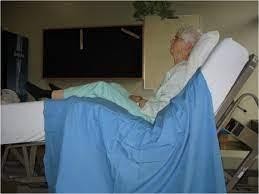A 7-year-old female child admitted to pre-op for scheduled surgery. Focused assessment completed. Lung sounds are clear to auscultation (CTA), heart sounds clear with normal sinus rhythm, skin clear with no breakdown.
- Abdomen soft with bowel sounds heard in all 4 quadrants.
- A feeding tube is present on the abdomen
- Site is clean and clear.
- Consents for surgery signed by parent at preadmission visit.
- Peripheral IV (PIV) 22 gauge inserted in right forearm with assistance from another nurse.
- Cried throughout procedure.
- Comforted by parent and use of touch music.
- IV fluids at 75 mL/hr started.
Client transported to operating room (OR) and The nurse is developing the plan of care for the child. To provide atraumatic care for this child post-operatively, what will be the priority?
Pain assessments
Antibiotics
Occupational therapy
Wound care
Physical therapy
The Correct Answer is A
Assessing and managing pain is a crucial aspect of providing atraumatic care for any post-operative patient, including a child. The child cried throughout the procedure and will likely experience discomfort and pain after the surgery. It is important to assess the child's pain levels regularly using appropriate pain assessment tools and provide appropriate pain management interventions to ensure their comfort and well-being.
While antibiotics may be prescribed if there is a surgical site infection or specific indications for their use, it is not mentioned as a priority in this scenario. The focus is on providing atraumatic care post-operatively, and pain assessment takes precedence.
Occupational therapy, physical therapy, and wound care are important components of the child's overall care, but they may not be the immediate priority post-operatively.
These interventions can be incorporated into the plan of care as needed, but addressing pain is of utmost importance in the immediate post-operative period.
Nursing Test Bank
Naxlex Comprehensive Predictor Exams
Related Questions
Correct Answer is C
Explanation
A) Incorrect- The left lateral position might not provide enough lung expansion for a client in respiratory distress.
B) Incorrect- Reverse Trendelenburg (head of bed elevated, foot of bed lowered) might not provide enough lung expansion and could exacerbate respiratory distress.
C) Correct- The High-Fowler's position, where the client is sitting upright at a 90-degree angle or as upright as tolerated, helps to improve lung expansion, reduce pressure on the diaphragm, and promote optimal oxygenation. This position is commonly used for clients with respiratory distress.
D) Incorrect- The supine position may worsen pulmonary congestion and compromise lung expansion in clients with pulmonary edema.

Correct Answer is C
Explanation
Given the client's symptoms of constant chest pressure that is unrelieved with rest, along with the client's appearance of anxiety, pallor, and diaphoresis, it indicates a high likelihood of an acute coronary event, such as a myocardial infarction (heart attack). In this situation, the nurse should prioritize immediate actions that address the potential cardiac emergency.
Aspirin is an essential medication in the initial management of acute coronary syndrome, including unstable angina and myocardial infarction. It helps to inhibit platelet aggregation and reduce the risk of clot formation in the coronary arteries. The chewable form of aspirin is recommended because it allows for more rapid absorption.
While evaluating extremities for perfusion, pulse volume, and pitting edema is important in assessing the client's overall cardiovascular status, it is not the immediate next step when faced with a suspected acute coronary event.
Securing client consent for coronary angiography and percutaneous coronary intervention (PCI) is a relevant step in the management of unstable angina and myocardial infarction, but it is not the immediate action to be taken in the emergency department. The client requires stabilization and initial medical interventions before procedural consent can be obtained.
Placing an indwelling urinary catheter and instituting strict intake and output measurements is not a priority action in this situation. The focus should be on addressing the potential acute coronary event and ensuring the client's cardiac stability. Urinary catheterization and monitoring of intake and output can be considered later, if necessary.
Whether you are a student looking to ace your exams or a practicing nurse seeking to enhance your expertise , our nursing education contents will empower you with the confidence and competence to make a difference in the lives of patients and become a respected leader in the healthcare field.
Visit Naxlex, invest in your future and unlock endless possibilities with our unparalleled nursing education contents today
Report Wrong Answer on the Current Question
Do you disagree with the answer? If yes, what is your expected answer? Explain.
Kindly be descriptive with the issue you are facing.
